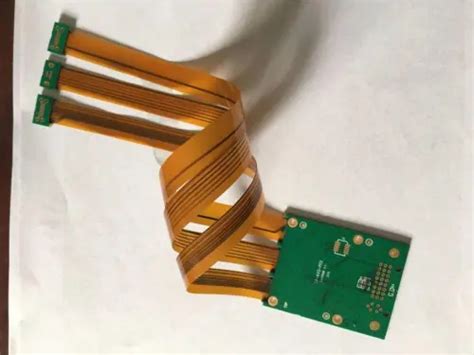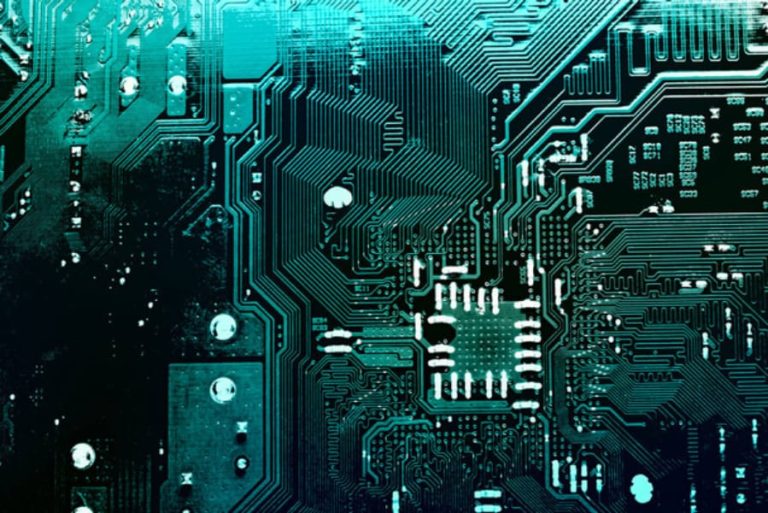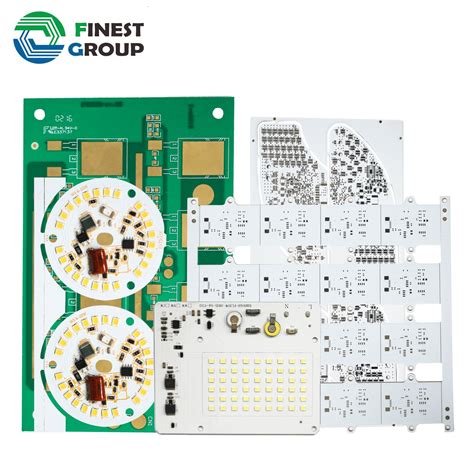Unlocking Savings: Your Guide to Affordable PCB Assembly Solutions
Key Takeaways
Understanding the cost structure of PCB assembly is crucial for anyone looking to optimize their budget. The primary factors influencing the price include the complexity of the design, the materials used, and the quantity of units being produced. By comprehending these elements, you can make informed decisions that align with your financial constraints. Moreover, adopting strategies for affordable PCB assembly is essential; this involves working efficiently within your budget while ensuring that you don’t compromise on quality. For instance, choosing a reputable manufacturer known for delivering quality PCBA at competitive rates can significantly lower costs without sacrificing performance. Additionally, leveraging automation in the assembly process can lead to decreased labor expenses and increased production speed. Smart sourcing of components is another vital strategy; bulk purchasing and choosing cost-effective materials can help streamline expenses. Finally, effective negotiation tactics when dealing with manufacturers can pave the way for more favorable contract terms, ultimately enhancing your project’s overall financial outcome while maintaining high standards in quality. By integrating these approaches, you can unlock considerable savings in your PCB assembly projects while ensuring reliability and efficiency in production.
Understanding PCB Assembly Costs: Key Factors Influencing Price
When navigating the landscape of PCB assembly, understanding the various components that influence costs is crucial for maximizing budget efficiency. Several key factors dictate the overall price of PCBA, including the complexity of the design, the materials used, and the volume of production. For instance, intricate designs often require more sophisticated manufacturing processes, which can drive up costs. Additionally, selecting high-quality components can result in greater initial expenditure; however, this choice often leads to improved reliability and reduced long-term expenses.
Moreover, bulk purchasing of components can significantly lower unit costs. It’s essential to strike a balance between quality and cost, ensuring that while savings are sought, they do not come at the expense of performance. The experience and reputation of the manufacturer also play a pivotal role; investing in a reputable firm may yield better cost efficiency in the long run due to reduced failure rates and superior customer support. By being mindful of these factors, businesses can make informed decisions that lead to affordable PCB assembly solutions without sacrificing quality or effectiveness.
Strategies for Affordable PCB Assembly: Maximizing Your Budget
To maximize your budget in pcb assembly, it’s crucial to implement effective strategies that not only reduce costs but also maintain quality and reliability. One key method is to identify the highest cost drivers throughout the pcba process. Understanding these factors enables informed decisions that can lead to significant savings. For instance, sourcing components in bulk can yield discounts, while selecting cost-effective manufacturing methods can lead to lower labor and overhead costs.
Additionally, optimizing the design phase can have a profound impact on overall expenses. By simplifying designs where possible, you can reduce the complexity of assembly, ultimately minimizing labor costs and potential errors. Here’s a brief overview in table format for clarity:
| Strategy | Description | Expected Savings |
|---|---|---|
| Bulk Component Sourcing | Purchase larger quantities to obtain better pricing | 10-30% per order |
| Design Optimization | Simplify designs to reduce complexity | 15-25% on assembly |
| Process Automation | Implement automated solutions to lower manual labor | 20-40% on labor |
Investing time and resources into understanding the entire ecosystem of pcb assembly will not only help you save expenses but also ensure you achieve your production goals without sacrificing quality. Fostering strong relationships with manufacturers who focus on affordability while maintaining high standards can create opportunities for negotiating better deals, further enhancing savings in your total cost of ownership.
By being strategic about these elements, you unlock new avenues for efficiency in pcba, ultimately paving the way toward a more sustainable production environment that benefits both your bottom line and product integrity.
Choosing the Right Manufacturer: Finding Quality at Lower Prices
When it comes to PCB assembly, selecting the right manufacturer is pivotal to achieving cost-effective solutions without sacrificing quality. By focusing on pcba providers who prioritize both efficiency and affordability, you can ensure that your assembly process remains on budget. Start by researching potential manufacturers thoroughly; seek out those with a proven track record in delivering reliable pcb assembly services. Compare quotes, but don’t overlook quality indicators such as certifications and reviews. This balance of cost versus quality is crucial—opt for manufacturers who utilize advanced technologies that streamline production while still providing durable products. Establishing clear communication with your chosen supplier will facilitate flexibility in meeting your specific needs, potentially leading to better pricing structures and arrangements. Ultimately, by investing time in this selection process, you can identify the ideal pcba manufacturer that not only fits your budget but also upholds their commitment to high-quality standards.
The Role of Automation in Reducing PCB Assembly Expenses
The integration of automation in pcb assembly processes plays a pivotal role in minimizing expenses while maintaining high standards of quality. By implementing automated production lines, manufacturers can significantly reduce labor costs and increase efficiency. For instance, automated machines can handle repetitive tasks with precision, reducing the likelihood of human error and ensuring consistent output. This not only lowers production times but also the associated costs.
Moreover, automation allows for better integration of various stages in the pcba process, facilitating smoother transitions between assembly and testing phases. By streamlining operations, manufacturers can utilize resources more effectively, further driving down costs.
“Investing in automation is not just about initial expenses; it’s about long-term savings achieved through improved efficiency,” emphasizes industry experts on cost-effective manufacturing practices.
Additionally, adopting automation technologies enables quicker adjustments to production methods based on market demands, allowing companies to respond nimbly without incurring significant costs from retooling or additional workforce training.
Overall, embracing automation is a strategic move for businesses looking to achieve cost-effective pcb assembly solutions without compromising on quality or reliability.
Sourcing Components Wisely: How to Cut Costs Without Sacrificing Quality
When it comes to pcb assembly, the choice of components plays a crucial role in managing costs while maintaining quality. One effective strategy is to source parts from reputable suppliers that offer competitive pricing. By exploring various vendors, you can discover options that fit your budget without compromising the reliability of your pcba. Additionally, buying in bulk can often result in significant savings. Establishing strong relationships with distributors not only provides access to discounts but also ensures a consistent supply chain. Another important aspect is to evaluate the necessity of each component; opting for alternatives that fulfill the same function but at a lower cost can further streamline expenses. It’s essential to conduct a thorough analysis of component specifications to avoid sacrificing performance for savings. Ultimately, making informed decisions about where and how you source components can lead to substantial reductions in overall pcb assembly costs, resulting in both efficient production and robust end products.
Negotiating Contracts: Tips for Securing Better Deals on PCB Assembly
Negotiating contracts for pcb assembly services is a crucial step in achieving cost-efficiency while maintaining high standards of quality. Before entering discussions, it’s essential to have a clear understanding of your project requirements, including specifications, timelines, and budget constraints. Leveraging this information enables you to present a well-rounded proposal that reflects your needs and fosters constructive dialogue with potential manufacturers.
When negotiating, consider initiating with multiple quotes from various pcba providers. This not only gives you a benchmark for comparison but also strengthens your position when discussing terms. Don’t hesitate to ask about bulk order discounts or long-term partnership benefits; manufacturers may be willing to lower prices if they see a future commitment or volume assurance.
Moreover, it’s beneficial to communicate your flexibility regarding timelines or payment structures. For example, offering an upfront deposit might incentivize a manufacturer to reduce their price. Remember that the goal is to reach a win-win situation without sacrificing the quality of materials or workmanship. By employing these strategies during negotiation, you can potentially unlock significant savings on your pcb assembly costs while ensuring the reliability and efficiency of the production process remain intact.
The Impact of Design Choices on Assembly Costs: Smart Strategies
Design decisions play a pivotal role in influencing pcb assembly costs, as they can significantly affect both material and labor expenses. By integrating smart strategies during the design phase, you can streamline the pcba process and mitigate unnecessary expenditures. For instance, opting for simpler layouts and fewer layers can drastically reduce the complexity of the assembly, ultimately leading to lower labor costs. Utilizing standard component sizes instead of custom options is another effective tactic; this choice not only minimizes sourcing expenses but also ensures quicker assembly timeframes. Additionally, designing with manufacturing capabilities in mind—such as avoiding tight tolerances and complex routing—can enhance production efficiency and ultimately lead to sustainable savings. The goal is to create a design that works seamlessly with your selected manufacturer’s capabilities while prioritizing cost reduction without sacrificing quality. In this manner, you unlock opportunities for savings, ensuring that your pcb assembly remains both affordable and reliable in delivering excellent performance. Implementing these considerations early in your design process can yield significant dividends when it comes time for production.
Case Studies in Cost-Effective PCB Assembly: Lessons Learned
Analyzing real-world examples can provide valuable insights into achieving cost-effective PCB assembly. One notable case involved a tech startup that faced budget constraints while striving to manufacture a new electronic device. By opting for a local PCBA manufacturer that specialized in low-volume production, they discovered significant savings without sacrificing quality. This decision not only reduced shipping costs but also shortened turnaround times, enabling faster market entry. Another instance highlights a mid-sized company that implemented strategic component sourcing practices. By negotiating directly with suppliers for bulk purchases of essential parts, they minimized costs and streamlined their assembly process. These success stories underscore the importance of flexibility and adaptability in navigating the complexities of PCB assembly while enhancing overall efficiency and reliability. Leveraging lessons from such case studies can guide businesses in making informed decisions, allowing them to unlock savings and maintain high standards in their production efforts.
Conclusion
In summary, navigating the world of PCB assembly can often feel overwhelming, particularly when budget constraints come into play. However, by adopting strategic measures, it is possible to achieve substantial savings without sacrificing quality. Cost-effective PCBA solutions can be unlocked through careful assessment of key factors influencing expenses. For instance, identifying the right components and leveraging automation in the manufacturing process can lead to significant reductions in overall costs. It’s also vital to maintain a focus on design choices that streamline production—resulting in both lower prices and higher efficiency. Engaging with manufacturers who are open to negotiation can uncover better deals and opportunities for collaboration that further facilitate affordable production levels. Ultimately, with a keen sense of sourcing and a proactive approach to negotiations, businesses can secure reliable PCB assembly services that align well with their budgetary requirements while maintaining product integrity.
FAQs
What is PCB assembly?
PCB assembly (PCBA) refers to the process of fabricating and assembling electronic components onto a printed circuit board (PCB). This process ensures that the board is ready for use in various electronic devices.
How can I reduce costs in PCB assembly without compromising quality?
To cut costs in PCB assembly, consider optimizing your design for manufacturability, sourcing components wisely, and selecting manufacturers that offer competitive pricing without sacrificing quality.
What factors influence the cost of PCB assembly?
The cost of PCBA is influenced by several factors, including material costs, component complexity, production volume, and labor expenses. Understanding these elements can help in budgeting effectively.
Are there specific strategies to make my PCB assembly more affordable?
Yes, some effective strategies include choosing simpler designs, using less expensive materials where possible, and partnering with manufacturers that utilize automation to reduce labor costs.
How does automation affect PCB assembly expenses?
The role of automation is significant in reducing PCB assembly expenses. Automated processes can enhance efficiency and accuracy while minimizing labor costs associated with manual assembly.
Can I negotiate contracts for better pricing on PCB assembly?
Absolutely! Negotiating contracts can lead to more favorable terms. When approaching potential partners, prepare data that demonstrates your expected production volume and emphasize long-term collaboration for better rates.
For more affordable solutions in PCB Assembly, please click here: Andwin PCB Assembly
This link will direct you to valuable resources on how to achieve cost-effective PCBA, ensuring your projects stay on budget while maintaining strong quality standards.







